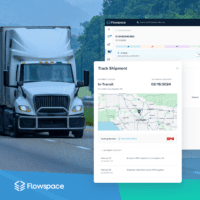The Amazon marketplace is an important channel for many brands that also rely on Amazon’s fulfillment service, FBA. While the service is mostly straightforward, the associated costs, fees and expenses are more difficult to understand. When using Amazon FBA, who pays for shipping, at what price?
When using FBA, shipping rates are based on the weight and dimensions of the product. These prices are what the seller is responsible for, not what the Prime customers see on the purchasing end.
For example, Amazon FBA shipping charges for a standard small package with a shipping weight of six ounces or less typically costs $2.16 per unit. The amount increases as the dimensions and weight go up. Additionally, the shipping cost differs when selling apparel versus non-apparel goods. Taking into account these varying fees matter when setting up and scaling your business operations. It helps to set price points and strategize promotions when enticing new customers while ensuring you’re receiving a profitable margin as a result.
Shipping is one of the many types of expenses to consider when selling on Amazon. If you’re just getting started as an e-commerce seller or want to expand your business and significantly increase profits, it’s important to first have a strong grasp of what it costs to sell on Amazon, what impacts selling costs, and ways to save money as an Amazon FBA seller. After calculating all the expenses, you may find this platform may not be what works best for you.
How Much Does It Cost to Sell on Amazon?
Prior to calculating Amazon FBA shipping charges, the first step is setting up a seller account. Amazon breaks down its FBA Seller plans into two categories: Individual and Professional. For those just starting out, the Individual plan works best if you plan on selling less than 40 units per month and you’re not yet ready to advertise or use any advanced selling tools. The Amazon FBA fee for this type of plan is $.99 per item sold, plus the generated shipping and sales fees.
Alternatively, the Professional plan has a monthly fee of $39.99 with the additional FBA fulfillment fee for sellers who are selling more than 40 units per month, want to advertise, and want to be eligible to appear at the top of product detail pages. Many FBA sellers may make the leap between the types of plans within a matter of months, if they have a strong selling strategy and in-demand products.
Amazon provides an Amazon seller calculator or FBA calculator that quickly generates your approximate sales margin when selling on Amazon. Simply input the costs per unit, product listing price, product category, and whether you’ll be using Amazon FBA program or using Fulfillment by Seller. It will give you an estimated breakdown of your profit. However, keep in mind, this total is before taking out sales tax, sales plan fees, any additional shipping fees, inventory storage fees, and selling fees.
Factors That Impact FBA Selling Costs
Not all products are priced the same when it comes to Amazon FBA shipping charges and fees. Different categories equal a different percentage of the total price that sellers must pay Amazon. For example, when selling appliances (think: kitchen tools), 15% of the portion of the total sales price up to $300 is paid to Amazon and 8% of the portion for total sales price for items greater than $300.
This is in addition to logistics management fees and Amazon FBA inventory storage fees. Amazon FBA storage fees are charged on a monthly basis per average daily volume as measured in cubic feet. It’s the price FBA sellers pay for Amazon to store in an Amazon warehouse, package, and ship their inventory during the process of selling. When there is surplus inventory, this immediately makes the monthly inventory storage fee go up. And, the margins take a hit because items aren’t selling.
Though sellers can always choose to fulfill their own orders from their home or office, there still has to be space for storing inventory, as well as calculating packaging and shipping methods to ensure quality and consistency for every package that goes out. When all is said and done, the price you pay may not offset the profits you’re making.
Save on Amazon Fees with Flowspace
One of the most significant ways to save money and time as an e-commerce business is to partner with a fulfillment platform to streamline the shipment and fulfillment process and take care of everything from picking and packing products to shipping and maintaining oversight for inventory and customer feedback.
Merchants using FBA can reduce unforeseen costs and delays by consolidating inventory and preparation ahead of inbounding to FBA with Flowspace. With the nationwide scale and infinite capacity of the Flowspace Network, products can be prepared and stored at fulfillment centers across the country, speeding up replenishment and cutting down the amount of time goods need to be stored in expensive Amazon warehouses.
For more on how Flowspace can help you run your e-commerce business, contact us today.




